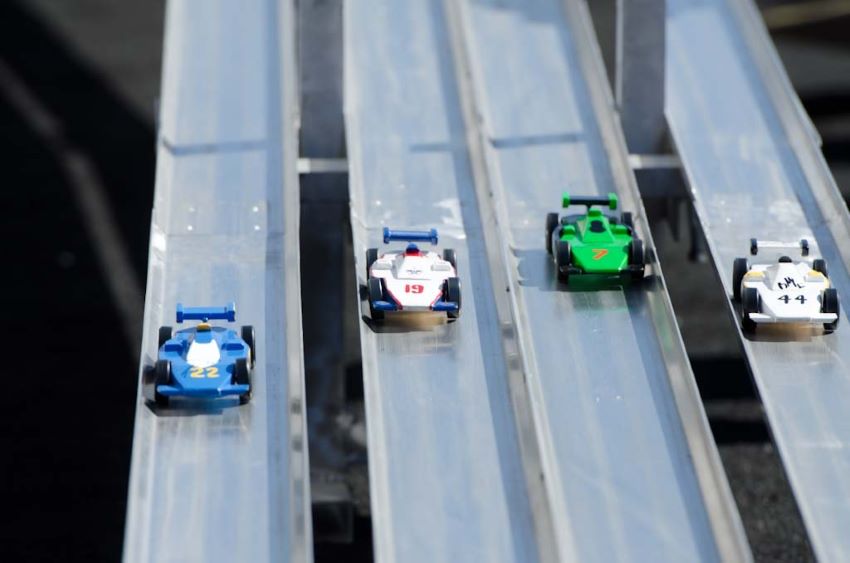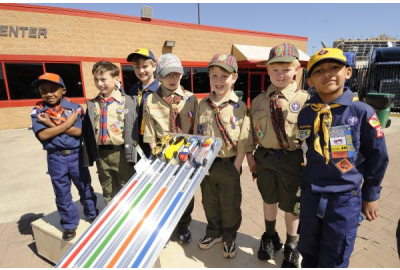Explaining the Physics Behind the Pinewood Derby
Have you ever participated in the Pinewood Derby? Arguably one of the biggest events in Scouting, this super-fun wooden car race has been the Scouting America's marquee tournament since the very first race almost 70 years ago. For decades, it's been a friendly competition in which Scouts build and race their own miniature cars made from a few simple materials, including a wooden block, plastic wheels, and metal axles. But why has this seemingly run-of-the-mill race become such a cultural phenomenon worldwide? It's simple. The Pinewood Derby has been a fun and exciting way for young boys and girls to learn about physics, engineering, design (anyone with a Scout involved in STEM?), and sportsmanship. After all, a Scout learns to win with humility and accept loss with grace! In this article, we'll demystify the lore of everyone's favorite wood car race by exploring the science behind Pinewood Derby cars, so you can use this knowledge to build a faster and more competitive race car at this year's big tournament.


How Does Weight Affect Your Pinewood Derby Car?
When you jump, there's a reason you don't keep floating up to the clouds. Think of weight and gravity as really close friends. Just as gravity pulls everything toward Earth's center, weight pulls us down toward the ground. These two forces are like peas in a pod—inseparable—and we can do little to escape their influence. Pinewood Derby cars are subject to the same laws of physics as you and me. What does this mean in terms of building a champion race car? Your car's weight will affect its acceleration, momentum, and center of gravity. This means a heavier car will have more momentum and will be less affected by bumps and obstacles on the track. However, a heavier car will also require more energy to move and may not be able to reach its top speed as quickly as a lighter car. To find the optimal weight for your Pinewood Derby car, you can use a simple formula known as the "3/4 Rule." This rule states that the wooden car's weight should be roughly 3/4 of the maximum weight the race rules allow. For most Pinewood Derby races, the maximum weight is 5 ounces, so the ideal weight for your car would be around 3.75 ounces.
Does the Shape of Your Pinewood Derby Car Make a Difference?
Another important factor in your Pinewood Derby design is your car's shape. Sure, PWD cars come in all shapes and sizes, but if you want to build a winning race car, knowing how the shape of your design influences your car's performance is essential. Your car's body will affect its aerodynamics, speed, and stability on the track. A sleek, aerodynamic shape will reduce drag and allow your car to move more quickly. But a more complex shape may also add weight and reduce balance, so finding a middle ground between speed and stability is important. To optimize your Pinewood Derby car's shape, sketch a few designs on paper. It's a great way to visualize and play around with the look of your car without committing to a design first and then cutting the wood block and sanding etc. If you want inspiration with car shapes, check out this super-helpful blog, 5 Basic Pinewood Derby Car Shapes. When building your Pinewood Derby car, it's best to aim for smooth, streamlined shapes free of sharp angles or edges.
How Do You Achieve Optimal Balance in a Pinewood Derby Car?
How Does Friction Impact Your Pinewood Derby Car?
Friction is a phenomenon we encounter in our everyday lives. Have you ever rubbed your hands really fast and felt them getting warmer? That's friction. Simply put, friction is when two things rub against each other and create heat, or in the case of your Pinewood Derby car, resistance! Imagine trying to race a wooden down a metal track. You'd have a tough time winning that race! Now, imagine you put wheels on the block. Makes it easier, but still not exactly a winning race car. Friction is caused by the irregularities on the surfaces of the objects (your car and the race track) that are in contact. The force of friction can be static or kinetic, depending on whether the objects are at rest or in motion. Your Pinewood Derby car's wheels will create friction against the track, slowing it down and reducing speed. To minimize friction, you should use high-quality wheels that are smooth and free of imperfections. You can also polish the axles and lubricate them with a high-quality oil to reduce friction and improve your car's performance.
Build a Winning Pinewood Derby Car at Scout Shop
There are also a few tips and tricks that can help you build a faster and more competitive Pinewood Derby car. You can use tungsten weights instead of lead weights, as tungsten is denser and will allow you to add more weight to the car without exceeding the maximum weight limit. You can also use graphite powder to lubricate the wheels, reducing friction and improving speed. To build a truly competitive car, you will need to optimize each of the factors discussed above and experiment with different designs, materials, and techniques. With patience, perseverance, and a little scientific know-how, you can build a Pinewood Derby car that is fast, sleek, and sure to impress. So get out there, start building, and have fun! To order your official Pinewood Derby Car Kit and accessories, including stickers, lights, sound kits, glow-in-the-dark wheels, and much more, please visit ScoutShop.org—the official store of the Scouting America!




